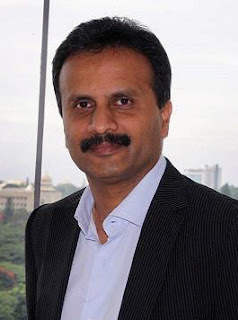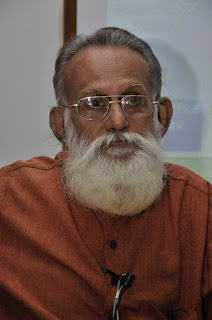Eulogy for Arun Jaitley: One Stop Trouble Shooter for BJP
Jaitley was a god sent delight for any party to have as a member and so it was with the BJP of which he was a member all through his political career, starting with his association with the ABVP. His handling of the Party Spokesperson’s responsibilities and so also his innumerable other responsibilities that the party bestowed him which kept him overly occupied with politics and the looser was his judicial career in which he was truly outstanding. He continued to share and contribute to his party’s interest till his very last breath. Even after he prematurely withdrew from party affairs, due to his health conditions, he continued to work for the party defending its decisions and ideologies through his most well reasoned and intellectually enriching blogs and cryptic, yet highly effective, tweets. His blog was delightful reading, perhaps even for those who were in complete disagreement with his points of view. There are very few, or may be none, in the BJP who have this unique quality of intellectually taking on their adversaries using the famed 'pen is mightier than the sword adage', which the left intelligentsia and the Nehruvian congress party and the followers of this ideology are famed not just in India but globally. Like most of the left leaning intellectuals and Nehruvian socialites and journalists, whose writings are normally picked up by most media both nationally and internationally to form an opinion, Jaitley’s writings too had this unique character. The past year or so has been a body blow for BJP, which has lost four of their most outstanding leaders ; Atal ji, Parrekar ji, Sushma ji and now Jaitley ji. It may take take a very long time for the party to come to terms with such back to back shocks.
Arun Jaitley will be remembered for the GST, which he managed to successfully pass through the parliament and while announcing the benefits of GST he had said, in his inimitable erudition style, “the old India was economically fragmented. The new India will create one tax, one market and for one nation”. The GST, notwithstanding some of the compulsive naysayers blaming it for the economic crisis in the industry - Rahul Gandhi described GST as Gabbar Singh Tax, a metaphor for terror tax -, was widely hailed as a game-changer for India's economy. The International Monetary Fund had said it could eventually add nearly two percentage points to India's growth. Although there have been several initial hiccups and many businesses have struggled to adapt to this new tax regime, yet the GST is on its path of taking firmer roots and is destined to be remembered as a crowning glory and a true legacy of Jaitley ji. Another major economic decision, the demonetisation, which many considered to be an abrupt move of Prime Minister Modi, which sent shock waves for the Indian economy, was also bravely faced by Jaitley. He repeatedly defended the move as essential to cracking down on tax evasion and promoting digital payments, calling it a "watershed moment" that Indians would look back on with pride, articulating his reasoning with fairly acceptable arguments.
A lawyer by profession, Arun Jaitely was a key person in Prime Minister Narendra Modi's Cabinet during his first tenure and almost always acted as the chief trouble-shooter for the government. During the first five years of the Modi government, Arun Jaitley shouldered several important assignments including holding the portfolios of Finance Ministry, Corporate Affairs Ministry, Defence Ministry, and Minister of Information and Broadcasting at various times, including donning multiple hats of different portfolios simultaneously. Arun Jaitley ji was also the Indian Defence Minister besides he also held the Finance and Corporate Affairs ministry. Although he never kept good health, he was indispensable to Prime Minister Narendra Modi. Arun Jaitley had an enviable contacts across the political, legal and social spectrum, which he effectively used to support PM Modi, in the smooth passage of bills in the Rajya Sabha, where the BJP was in a minority. He was the go-to guy to keep the NDA running smoothly. He was Modi’s "eyes and ears". Perhaps it was too much for Jaitley to continue to shoulder such arduous responsibilities, while his health was failing him. Jaitley's deteriorating health including his kidney transplant in May 2018, compelled him to opt out of Modi's second government and active electoral politics but then before he could recuperate destiny had a different role set out for him in the heavenly abode where he now resides in eternal peace.
Leaders cutting across party lines were united in overwhelmingly paying extraordinary rich tributes to Arun Jaitley ji. Arun was one of those young student leaders who was jailed for taking part in student protests during the emergency period. He will be remembered for taking on the - hit and run striking man - Arvind Kejriwal, who has a compulsive allegation habit, which he used most effectively to make corruption and other allegations against all and sundry including Arun Jaitley. But then Kejriwal had to bite the dust and render an unconditional apology to Jaitley, who sued him for character assassination and false allegations. Not withstanding the fact that Kejriwal had hired - the one and only - Ram Jethmalani to defend him, yet Kejriwal had to accept defeat and render an unconditional apology and withdraw his false allegations. Such was the strength and power of conviction that Jaitley ji had in his integrity.
Now that Arun Jaitley is gone for his heavenly abode, yet one thing remains certain, his voice will continue to reverberate not just in the Parliament but all across India. Long live Jaitley ji. RIP.



































